Overview
Have you ever found yourself scrambling for supplies in the middle of a busy workday? That’s where industrial vending machines come in. These handy machines not only make it easier to get what you need but also play a big role in boosting operational efficiency, keeping tabs on inventory, and ensuring workplace safety.
Here’s the thing: they automate stock management, which means less time spent searching for items and more time focused on getting work done. Plus, they help cut down on labor costs by reducing the need for constant manual inventory checks. Imagine being able to grab essential supplies on demand without the hassle!
The good news is that by integrating these machines into your operations, you can see significant cost savings and a real boost in productivity. So, if you’re looking to streamline your processes and make life a bit easier at work, consider giving industrial vending machines a shot. They might just be the solution you didn’t know you needed.
Introduction
Have you ever found yourself in a situation where you need a tool or supply, but it’s nowhere to be found? That’s where industrial vending machines come in. They’re changing the game for workplace efficiency, making it easier to manage essential tools and supplies in various industrial settings.
These automated systems not only make it simple to grab personal protective equipment and maintenance supplies, but they also help with keeping track of inventory and cutting down on operational costs. Sounds great, right? But here’s the thing: as more businesses jump on board with these technologies, some questions pop up.
What are the real benefits of industrial vending machines? And how can you navigate the challenges that come with implementing them? Let’s break it down. Exploring these points shows just how much industrial vending machines can revolutionize operations and lead to significant savings for your business.
Defining Industrial Vending Machines: Functions and Features
Industrial automated systems, such as industrial vending machines, are pretty cool setups designed to provide essential tools, equipment, and supplies in industrial spaces. Unlike the usual dispensers that just hand out snacks or drinks, industrial vending machines focus on must-have items like personal protective equipment (PPE), maintenance supplies, and various tools. With advanced stock management systems, they utilize an industrial vending machine to keep a close eye on usage patterns and automatically restock supplies, ensuring employees have what they need right when they need it. This capability really boosts workplace productivity by cutting down on downtime and enhancing , similar to the benefits provided by an industrial vending machine.
Here’s the thing: deploying commercial dispensing units can lead to some serious cost savings. Studies show that automated systems can slash inventory management labor costs by up to 40%, while also reducing inventory consumption by 25-35%. As more sectors start to embrace these solutions, the market for industrial vending machines is expected to grow from USD 3.006 billion in 2023 to about USD 5.767 billion by 2030, reflecting a solid compound annual growth rate (CAGR) of 9.8%. Plus, the market size for industrial vending machines was estimated at USD 1.6 billion in 2024, highlighting this growth trend.
Let’s break it down with some real-world examples. In manufacturing environments, industrial vending machines really excel. Take coil dispensers, for instance. They release a variety of items using a spiral coil system and have been especially beneficial in industries like automotive and aerospace, where quick access to tools and resources is key. By ensuring the right items are available at the right time, the industrial vending machine not only streamlines operations but also helps improve safety and compliance with strict industry standards. As Laura Wood, Senior Press Manager, puts it, 'These devices significantly improve operational efficiency by ensuring the availability of the appropriate tools and supplies at the right time.
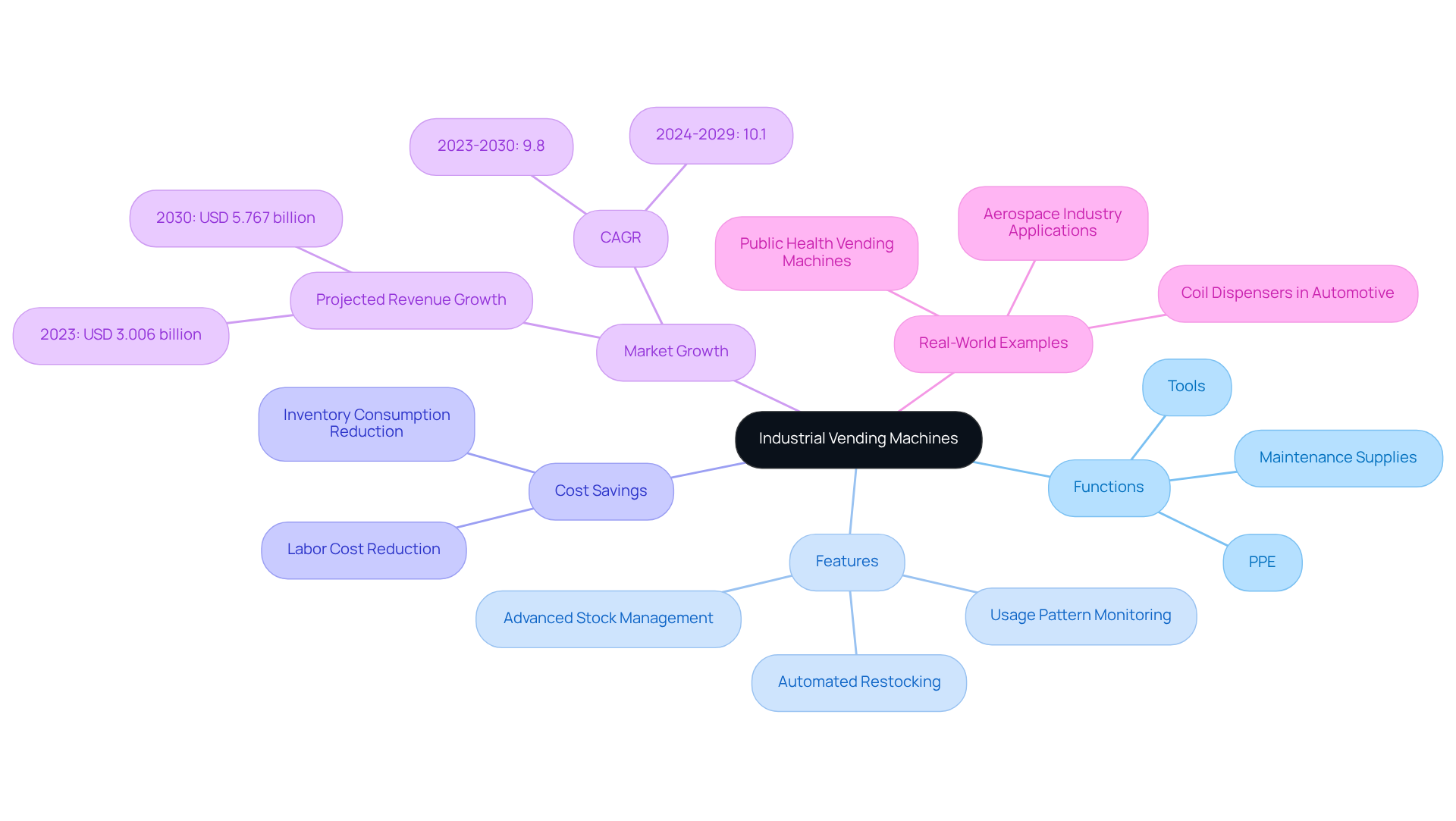
The Evolution of Industrial Vending Machines: A Historical Perspective
You know, the idea of automated dispensers goes way back. The first one we know of was created by Hero of Alexandria in the first century AD to dispense holy water. Fast forward to the late 20th century, and that’s when we really started seeing industrial vending machines take shape, mainly to meet the needs of manufacturing and production. Early models were pretty basic, just dispensing tools and safety gear.
But here’s the thing: the development of the industrial vending machine shows how technology has come a long way since then. Nowadays, industrial vending machines come packed with features like real-time stock tracking and remote monitoring. Industrial vending machines have become essential in modern operations. Just think about it—the global automated retail market was valued at a whopping USD 2,365.0 million in 2020 and is expected to grow to around USD 4,164.5 million by 2028. That’s a compound annual growth rate (CAGR) of 7.5%! Why? Because businesses are looking for better inventory management and automated solutions, especially in sectors like manufacturing and healthcare, the industrial vending machine is a viable option.
Speaking of which, manufacturers are expected to represent about 57% of the North American market revenue in 2024. Plus, the rise of smart technologies means that industrial vending machines can provide detailed analytics and insights, which only strengthens their role in today’s industrial landscape. And the good news is, the market is projected to grow at a CAGR of 9.9% from 2025 to 2030. That’s a clear sign of ongoing demand for innovative solutions like the industrial vending machine.
You might also notice that industrial automated kiosks are stepping up by offering . This is a big win for workplace safety and compliance with regulations. So, if you’re in a position to consider these solutions, now’s the time to look into it!
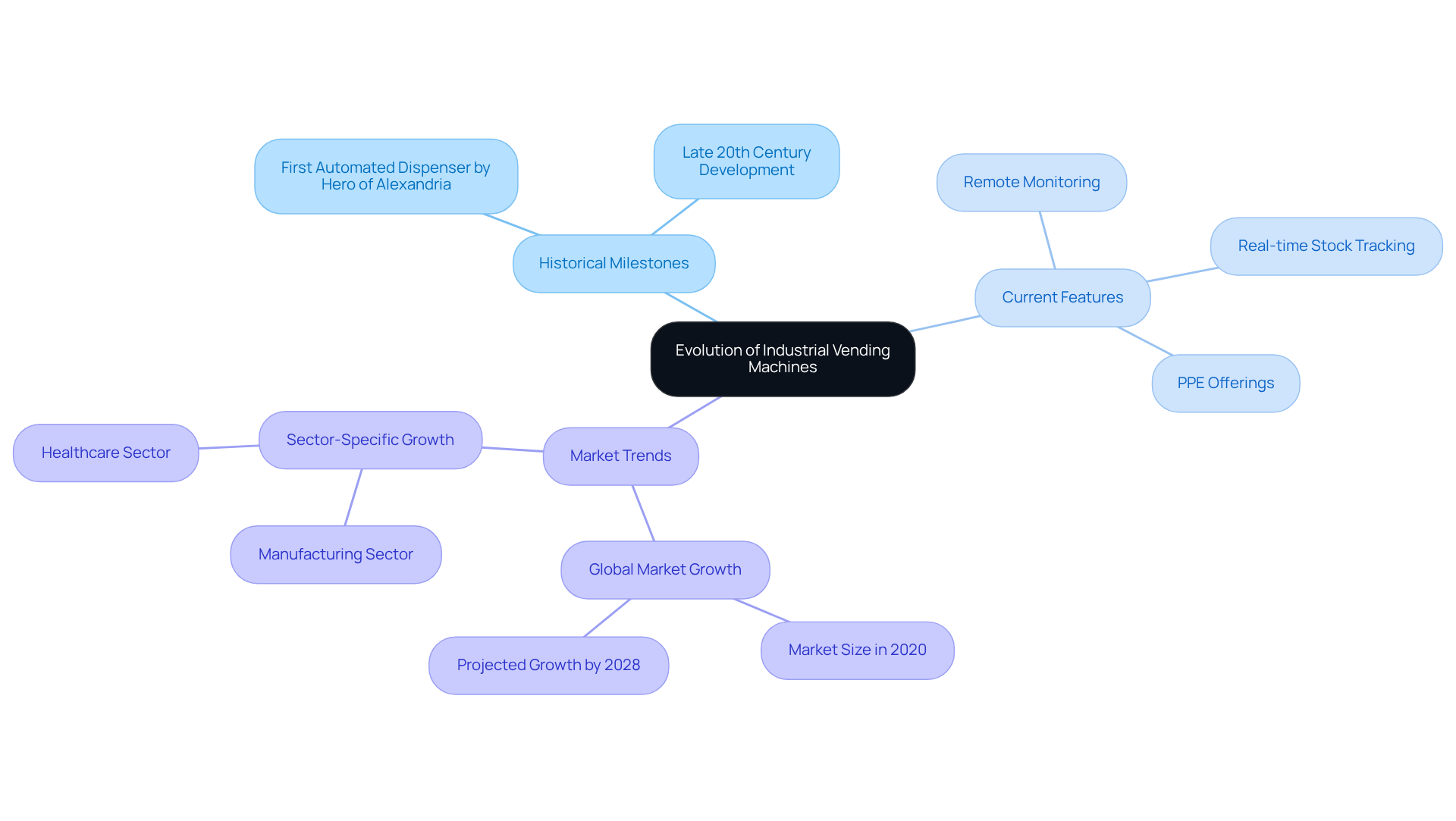
Key Characteristics and Benefits of Industrial Vending Machines
Let’s discuss how industrial vending machines can truly make a difference for your business. They offer some pretty significant benefits that you might want to consider.
- Enhanced Inventory Control: Imagine being able to track your inventory levels accurately. These machines make it easier to avoid stockouts and overstocking, which is crucial, especially in fast-paced environments where every minute counts.
- Increased Efficiency: Think about how frustrating it is when you can’t find the tools or supplies you need. With the use of an industrial vending machine, your team can grab what they need on demand, and keeping workflows smooth. It’s all about keeping operations running without interruption.
- Cost Savings: Who doesn’t love saving money? Automating stock management can lead to significant labor cost reductions. Plus, by monitoring usage patterns, you can cut down on waste. Reports show that companies utilizing industrial vending machines have experienced a decrease in stock usage by 25-35% and a drop in labor costs by up to 40%. The National Association of Manufacturers (NAM) backs this up, noting that automated inventory management systems lead to these impressive savings.
- Improved Safety: Safety is key in any workplace. With personal protective equipment (PPE) and safety gear available at the push of a button, these machines help ensure that your team has what they need to stay safe. This is especially important in industries where compliance with safety regulations is a must.
- Data Analytics: Many of these vending machines come with advanced reporting features. This allows supervisors to track usage trends and make informed purchasing decisions. With the integration of IoT and AI, inventory management becomes smarter, aligning supply with actual demand.
- Market Growth Context: The industrial automated retail sector is on the rise, expected to hit USD 8.53 billion by 2034. This shows just how important these solutions are for improving operational efficiency and cutting costs across various industries.
So, if you’re looking for a way to enhance your business operations, consider exploring the advantages of using an industrial vending machine. They might just be the solution you need to streamline processes and save money.
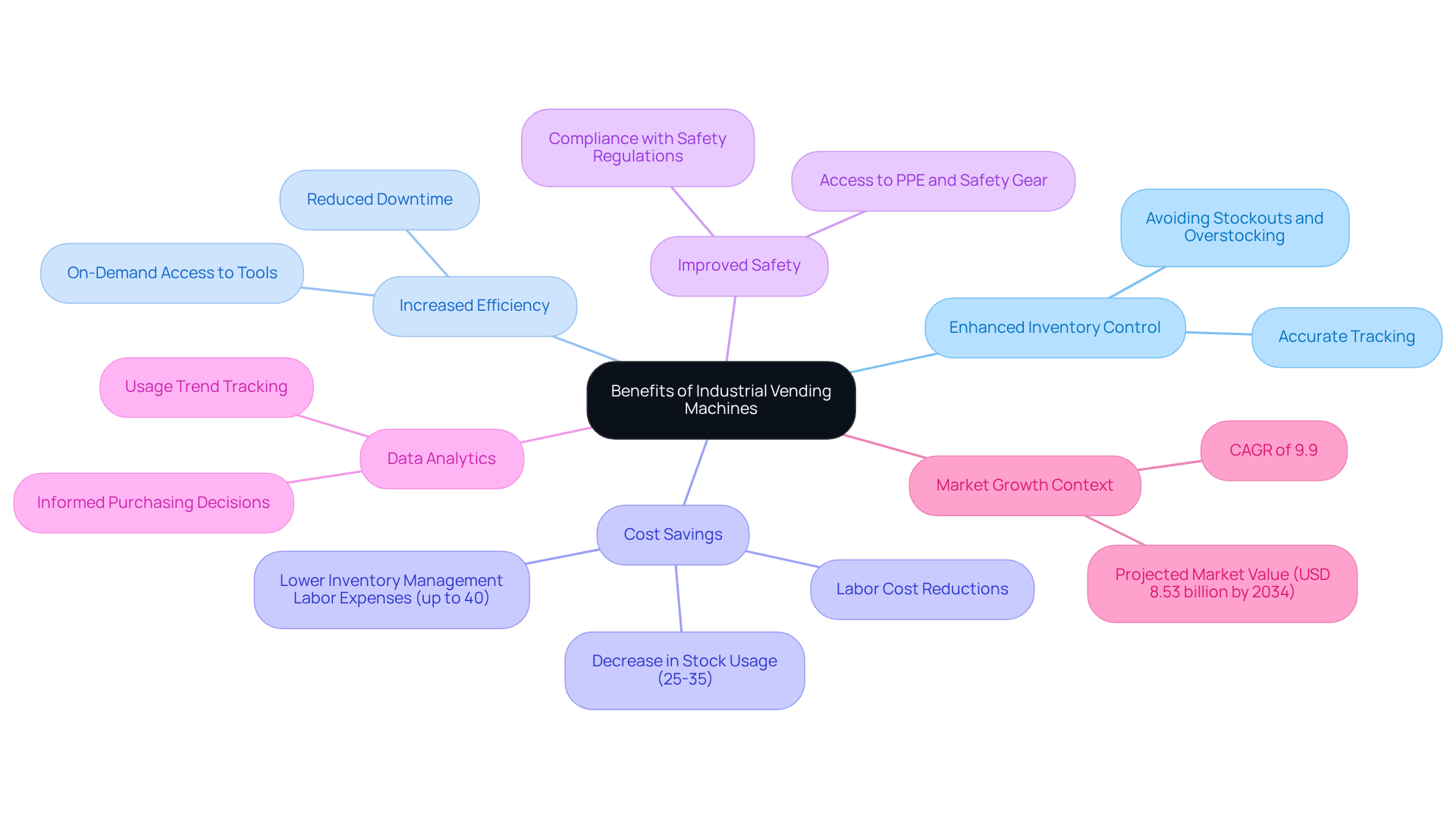
Types of Industrial Vending Machines and Their Applications
Industrial vending machines are quite impressive and available in various types, each tailored to meet specific needs across different sectors.
- Tool Vending Machines are a game-changer. They dispense essential tools and equipment for manufacturing and maintenance tasks, which means you can grab what you need right when you need it, boosting productivity.
- Then there are PPE Vending Units. These handy devices supply personal protective gear like gloves, helmets, and safety glasses. They help organizations stick to safety regulations, making the workplace a safer spot for everyone.
- Don’t forget about Parts Vending Devices. They keep spare parts and components on hand, which helps minimize downtime. Quick access to critical items keeps everything running smoothly.
- Now, let’s talk about MRO Dispensing Units. These focus on maintenance, repair, and operations supplies, helping businesses manage their inventory effectively. This not only reduces waste but also optimizes how resources are allocated. Plus, MRO products are used frequently, which is a big deal in the automated retail sector.
- And if you’re looking for flexibility, Customizable Vending Solutions are the way to go. They can be set up to dispense a variety of items based on your specific needs, making them adaptable for different business scenarios.
The rise in industrial vending machines is clear in the commercial automated dispenser market. It was valued at around USD 3,006.2 million in 2023 and is expected to hit USD 5,767.0 million by 2030, growing at a CAGR of 9.8%. According to the National Association of Manufacturers, using automated stock management systems like these dispensers has helped organizations cut stock usage by 25-35% and reduce management labor costs by up to 40%. This trend shows just how much businesses are leaning on automated solutions to and manage inventory better across various industries.
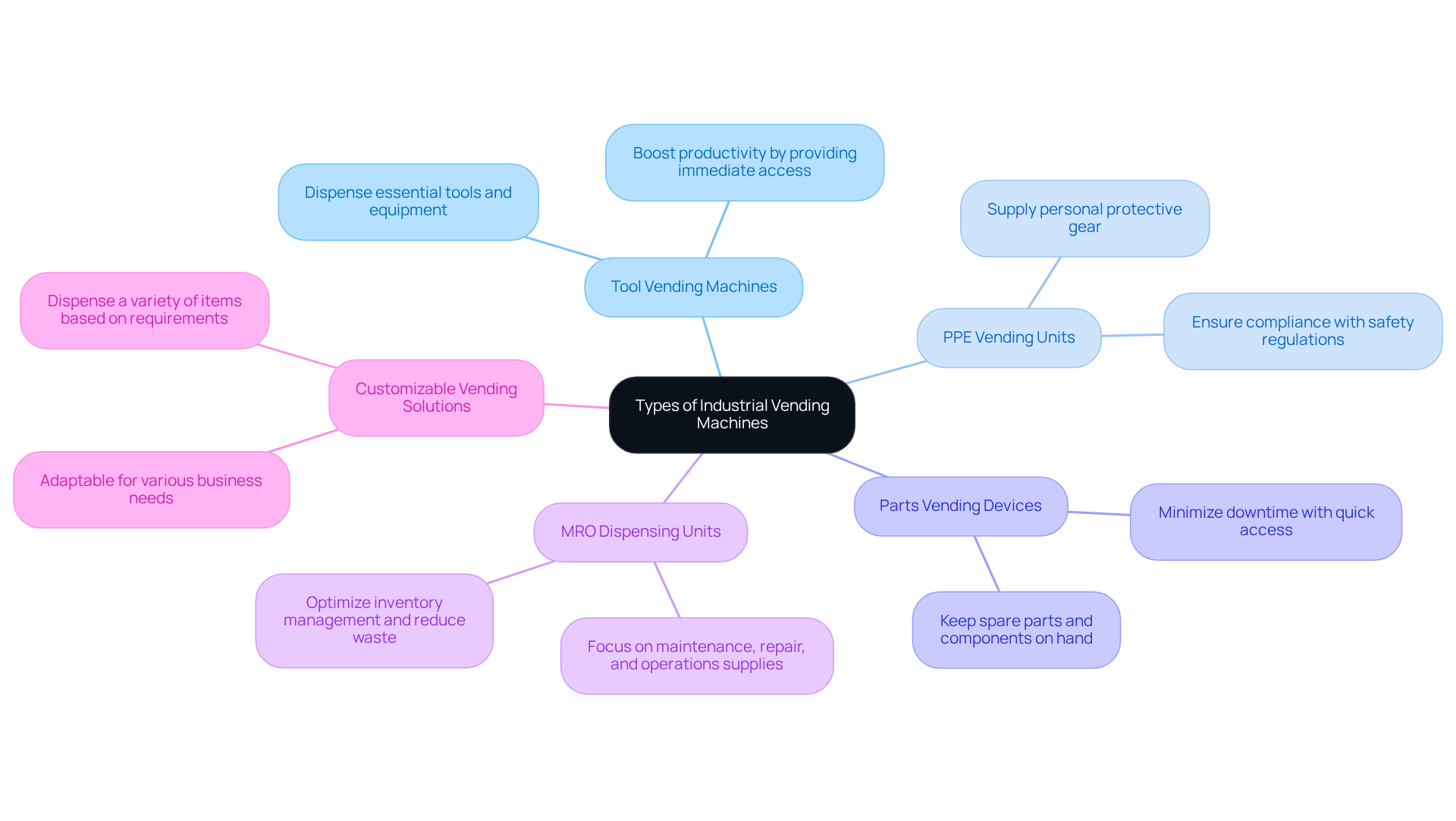
Challenges and Considerations in Implementing Industrial Vending Machines
Implementing industrial vending machines can seem a bit daunting, right? There are a few challenges to consider if you want to really make the most of what they offer.
First up, let’s talk about the initial investment. The upfront costs for buying and setting up these machines can hit anywhere from $3,000 to over $20,000, depending on what features you’re after. For some businesses, especially those with tighter budgets, that initial outlay can be a real sticking point.
Then there’s maintenance and upkeep. You’ll need to keep these machines running smoothly and stocked with the essentials. Maintenance costs can vary, so it's smart to budget for regular servicing and any unexpected repairs. Nobody wants operational hiccups, right?
Next, consider user training. Your team might need a bit of guidance on how to use the machines and manage stock effectively. This training is key to of the devices and ensuring everything runs like a well-oiled machine.
And don’t forget about integration with existing systems. Think about how these automated kiosks will mesh with your current stock management and procurement processes. A smooth integration can boost your efficiency, but it might take some planning and possibly extra investment in tech.
So, here’s the thing: by tackling these challenges head-on, you can really optimize the benefits of the industrial vending machine. This means better inventory management, less downtime, and an overall boost in operational efficiency. Let’s make it happen!
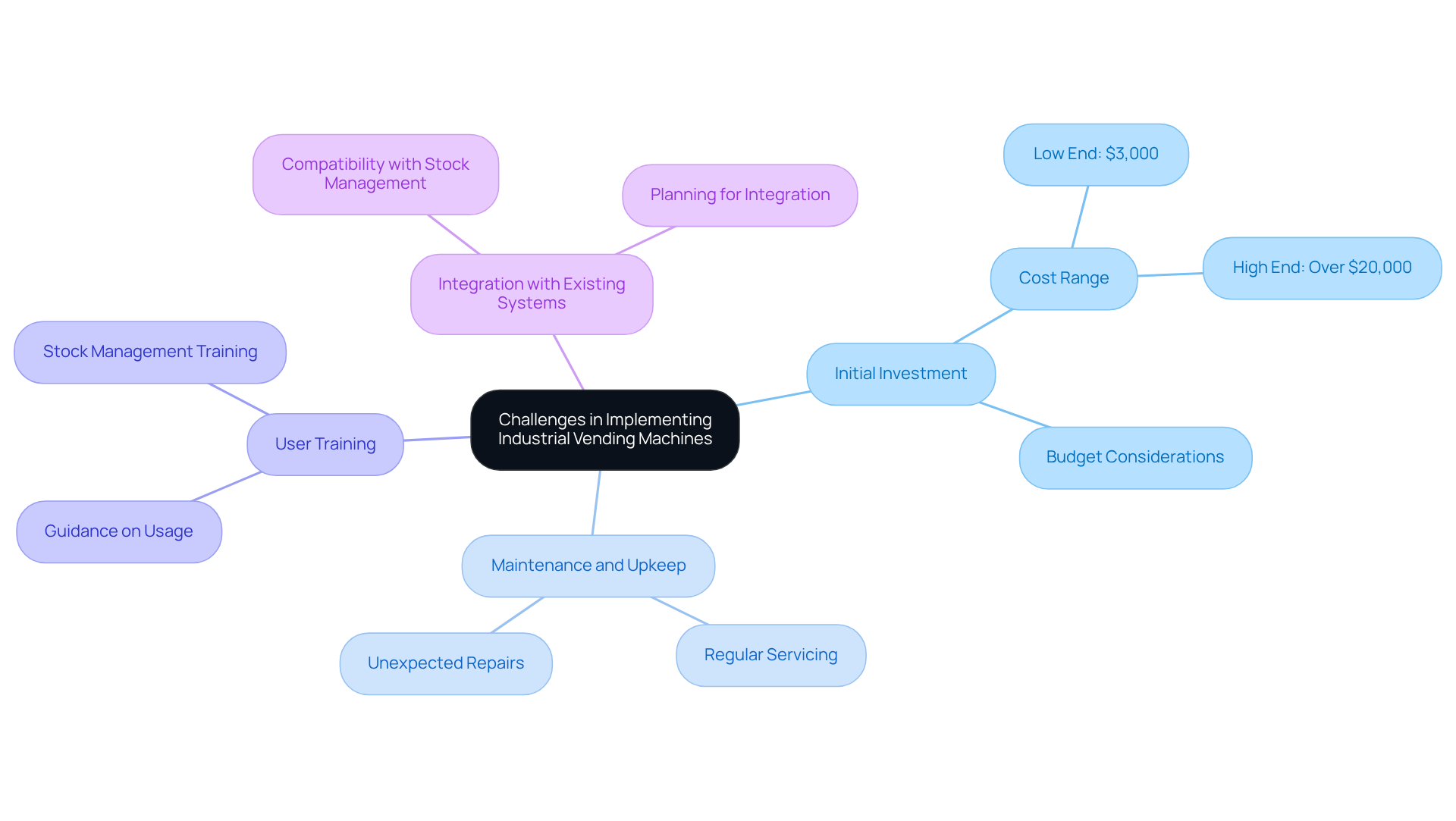
Conclusion
Industrial vending machines are a game changer for businesses looking to boost efficiency and manage inventory better. By automating the dispensing of essential tools, equipment, and supplies, these machines help cut down on downtime and significantly lower labor costs and waste. It’s pretty impressive how these devices have evolved from simple dispensers to advanced automated systems, especially in industries like manufacturing and healthcare.
So, what’s in it for you? Well, industrial vending machines come with a bunch of benefits. Think enhanced inventory control, increased efficiency, cost savings, improved safety, and even valuable data analytics. They’re designed to meet diverse needs too, offering specialized units for tools, personal protective equipment, and maintenance supplies. Plus, they adapt to the specific requirements of different sectors. As the market for these machines keeps growing, businesses that invest in them can expect solid returns in productivity and safety.
Here’s the thing: with all these advantages and the projected growth of the industrial vending machine market, it’s worth your while to explore these innovative solutions. Sure, there might be some challenges like initial investment and integration with your existing systems, but overcoming these hurdles can really help you tap into the full potential of industrial vending machines. This isn’t just a passing trend; it’s a smart move towards future-proofing your operations in an increasingly automated world.
So, why not take the plunge? Embrace this technology and watch your workplace become more efficient, cost-effective, and safer. You’ve got this!
Frequently Asked Questions
What are industrial vending machines designed for?
Industrial vending machines are designed to provide essential tools, equipment, and supplies in industrial spaces, focusing on items like personal protective equipment (PPE), maintenance supplies, and various tools.
How do industrial vending machines enhance workplace productivity?
They enhance workplace productivity by utilizing advanced stock management systems to monitor usage patterns and automatically restock supplies, ensuring employees have access to necessary items when needed, thereby reducing downtime and improving operational efficiency.
What cost savings can be achieved by deploying industrial vending machines?
Automated systems can reduce inventory management labor costs by up to 40% and decrease inventory consumption by 25-35%.
What is the projected market growth for industrial vending machines?
The market for industrial vending machines is expected to grow from USD 3.006 billion in 2023 to about USD 5.767 billion by 2030, with a compound annual growth rate (CAGR) of 9.8%.
Can you provide an example of how industrial vending machines are used in manufacturing?
In manufacturing environments, coil dispensers release a variety of items using a spiral coil system, which is particularly beneficial in industries like automotive and aerospace for quick access to tools and resources.
What historical significance do industrial vending machines have?
The concept of automated dispensers dates back to the first century AD with Hero of Alexandria's device to dispense holy water, evolving significantly by the late 20th century to meet the needs of manufacturing and production.
What modern features do industrial vending machines offer?
Modern industrial vending machines come equipped with features such as real-time stock tracking and remote monitoring, making them essential in contemporary operations.
What is the expected market trend for automated retail, including industrial vending machines?
The global automated retail market was valued at USD 2,365.0 million in 2020 and is projected to grow to around USD 4,164.5 million by 2028, indicating a CAGR of 7.5%.
What role do smart technologies play in industrial vending machines?
Smart technologies enable industrial vending machines to provide detailed analytics and insights, reinforcing their importance in today's industrial landscape.
How do industrial automated kiosks contribute to workplace safety?
Industrial automated kiosks that offer personal protective equipment (PPE) enhance workplace safety and help ensure compliance with regulations.
List of Sources
- Defining Industrial Vending Machines: Functions and Features
- marketsandmarkets.com (https://marketsandmarkets.com/Market-Reports/industrial-vending-machine-market-201841752.html)
- Industrial Vending Machine Market Size & Outlook, 2030 (https://grandviewresearch.com/horizon/outlook/industrial-vending-machine-market-size/global)
- verifiedmarketresearch.com (https://verifiedmarketresearch.com/product/industrial-vending-machine-market)
- Industrial Vending Machine Market Forecast Report 2024-2030: First Public Health Vending Machine Launched to Enhance Community Access to Essential Health Supplies (https://finance.yahoo.com/news/industrial-vending-machine-market-forecast-152800863.html)
- factmr.com (https://factmr.com/report/industrial-vending-machine-market)
- The Evolution of Industrial Vending Machines: A Historical Perspective
- marketsandmarkets.com (https://marketsandmarkets.com/Market-Reports/industrial-vending-machine-market-201841752.html)
- Industrial Vending Machines Market Size & Share | Industry Report [2030] (https://fortunebusinessinsights.com/industrial-vending-machines-market-103176)
- grandviewresearch.com (https://grandviewresearch.com/industry-analysis/industrial-vending-machines-market)
- North America Industrial Vending Machine Market Size, Growth 2025 – 2030 (https://mordorintelligence.com/industry-reports/north-america-industrial-vending-machine-market)
- verifiedmarketresearch.com (https://verifiedmarketresearch.com/product/industrial-vending-machine-market)
- Key Characteristics and Benefits of Industrial Vending Machines
- Industrial Vending Machine Market | Global Size & Share 2032 (https://snsinsider.com/reports/industrial-vending-machine-market-1176)
- verifiedmarketresearch.com (https://verifiedmarketresearch.com/product/industrial-vending-machine-market)
- Industrial Vending Machine Market Forecast Report 2024-2030: First Public Health Vending Machine Launched to Enhance Community Access to Essential Health Supplies (https://finance.yahoo.com/news/industrial-vending-machine-market-forecast-152800863.html)
- Industrial Vending Machines Market Size, Share & Industry Growth Outlook - 2032 (https://consegicbusinessintelligence.com/industrial-vending-machines-market)
- factmr.com (https://factmr.com/report/industrial-vending-machine-market)
- Types of Industrial Vending Machines and Their Applications
- factmr.com (https://factmr.com/report/industrial-vending-machine-market)
- Industrial Vending Machine Market Size & Outlook, 2030 (https://grandviewresearch.com/horizon/outlook/industrial-vending-machine-market-size/global)
- verifiedmarketresearch.com (https://verifiedmarketresearch.com/product/industrial-vending-machine-market)
- Industrial Vending Machine Market Forecast Report 2024-2030: First Public Health Vending Machine Launched to Enhance Community Access to Essential Health Supplies (https://finance.yahoo.com/news/industrial-vending-machine-market-forecast-152800863.html)
- marketsandmarkets.com (https://marketsandmarkets.com/Market-Reports/industrial-vending-machine-market-201841752.html)
- Challenges and Considerations in Implementing Industrial Vending Machines
- Industrial Vending Machines Market 2025-2034 | Size,Share, Growth (https://markwideresearch.com/industrial-vending-machines-market)
- How to Start a Vending Machine Business: Cost, Tips, Pros and Cons - NerdWallet (https://nerdwallet.com/article/small-business/how-to-start-a-vending-machine-business)
- franchisedirect.com (https://franchisedirect.com/vendingfranchiseopportunities/costofoperatingavendingmachine/121/301)
- Start a vending machine business: Steps for 2025 | Swoop US (https://swoopfunding.com/us/start-a-business/vending-machine-business)
- Is Vending Worth the Cost for Distributors? (https://inddist.com/business-technology/blog/21603272/is-vending-worth-the-cost-for-distributors)




